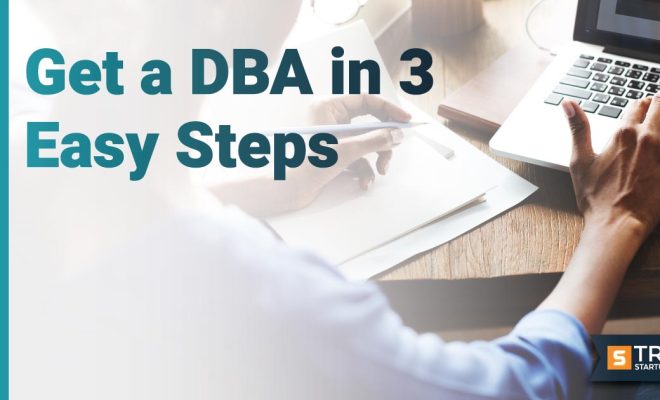How to Set Up a DBA

Setting up a Doing Business As (DBA) is a crucial step for many small business owners and entrepreneurs who want to operate under a different name than their legal business name. A DBA not only allows you to create a separate identity for your company, but it also provides certain legal protections and benefits.
If you are looking to set up a DBA, this comprehensive guide is here to help. We will walk you through the entire process step by step.
1. Determine the Need for a DBA
Before setting up your DBA, you need to determine if you even require one. You should consider getting a DBA if:
– You are operating as a sole proprietorship or partnership and want to do business under a name other than your personal name.
– Your existing company wants to conduct business under another name.
– You are an LLC or corporation and want to differentiate specific product lines or services from the rest of your business.
2. Choose Your Desired Business Name
Choose the name you would like your company to operate under. Be creative, but also ensure it aligns with your products, services, or overall brand message. Keep in mind that the name must be unique and not violate any trademarks or copyrights.
3. Check Name Availability
Do some research and ensure that your desired business name is available in your state or county. Each state has different rules concerning the approval of DBA names, so it is vital to adhere to the specific regulations in your jurisdiction. Consulting your local government office or using online name searching tools can help ensure there are no conflicts.
4. Register Your DBA
The process of registering your DBA varies depending on the state, county, or municipality where your business is located. However, some general steps should be followed:
– Fill out the required registration forms which typically include basic information about yourself and your business.
– Pay the required filing fee, which varies from one jurisdiction to another.
– Publish your DBA name in a local newspaper if required by your state or county. This step helps to notify the public about your new business name.
5. Open a Business Bank Account
One major advantage of having a DBA is the ability to open a business bank account under your registered name. This bank account should be separate from your personal finances to maintain clear records and facilitate taxation and other financial matters.
6. Obtain Necessary Permits and Licenses
With your DBA registered, you may need to procure any applicable permits and licenses necessary for your business operations. Ensure that you are aware of the required licenses specific to your industry and location.
7. Update Business Documents and Contracts
Update all relevant business documents and contracts with your new DBA name. This can include updating invoices, promotional materials, contracts, agreements, and websites to reflect this new identity.
In conclusion, setting up a DBA is an essential step for many businesses as it enables them to create an independent identity without establishing an entirely new legal entity. Make sure to understand your state’s specific requirements, choose a unique name that aligns with your brand, register the DBA accordingly, and make necessary updates across all aspects of your business operations.






